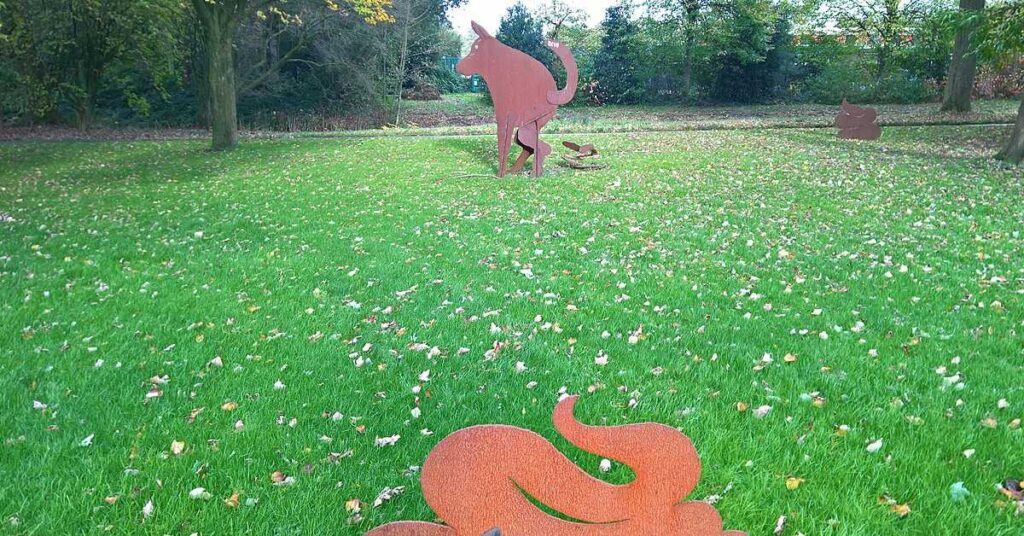If you’ve ever been puzzled by white specks in your dog’s poop, you’re not alone. There are many other symptoms that indicate possible problems, such as parasites, flies, and other insects. Here’s how to recognize white specks in dog poop. First, you should identify what they are, as they can be an indication of various gastrointestinal problems.
Identifying white specks in dog poop
If your dog is scooping up poop on a regular basis, you may notice tiny white spots. You may wonder if your pet has a bacterial infection. While there are many different causes for white spots in dog poop, it is important to recognize these signs so you can take action to treat your dog’s infection. Read on to learn how to identify white specks in dog poop.
White specks in dog poop are generally harmless, but they should be examined by your veterinarian if they are moving. While static white specks in dog poop are not causing alarm, moving ones are a sign of infection. In addition, the white specks may be motionless before suddenly moving around. Whether they’re moving or stationary, they are worth examining and treating.
When examining dog poop, remember to look for any white specks or blood. This is a common sign of worms and can also be accompanied by bright red or purple poop. Sometimes white specks are a sign of undigested food. Certain pills can also cause white specks in dog poop if they have hard outer shells. Your dog should be examined immediately for these signs.
If you notice white specks in your dog’s poop, they are probably bits of undigested food. Some dogs may have white specks when they eat undigested rice or raw diets. Raw food often contains too much calcium, which can cause constipation. While these specks are unlikely to be harmful, they should be examined by a veterinarian as they could indicate a bacterial infection or an allergy.
Read more about Causes of Dog Orange Diarrhea
Identifying parasites
There are many different symptoms associated with intestinal parasites in dogs, but the most obvious one is diarrhea. In addition to diarrhea, your dog may also show signs of other clinical illnesses. If you notice these symptoms, you should take your dog to the veterinarian for proper treatment. Fortunately, many parasites are treatable and preventable, as long as you identify the symptoms early. Learn more about identifying parasites in dog poop.
Fecal floatation is one method of identifying parasites in a dog’s stool. This procedure involves mixing fecal material with a special liquid. The solution attracts parasite eggs, which float to the surface. Once the parasite eggs have risen to the top of the solution, the veterinarian will examine them under a microscope. Once the parasite eggs are visible, the veterinarian can determine which type of adult is in the dog’s stool.
Tapeworms are white and 1/4 to 1/2 inch in length. Tapeworms are visible in the dog’s stool or on its bedding. If you suspect your dog may be suffering from tapeworms, it is best to seek veterinary care. Your veterinarian can prescribe de-worming medication to treat your dog’s intestinal infection. Fleas are another common parasite in dogs and are visible after a dog has been outside. If your dog has fleas, they can also be identified through fecal testing. Centex is also helpful in the prevention of flea infestations.
Treatment for intestinal parasites depends on the type of worms. Most types of parasites can be treated with oral medication. The medication may come in the form of a liquid, tablet, or powder. Some medications can be applied topically to the dog’s skin, while others are injected. The treatment you choose will depend on the type of parasites, your dog’s age, and the overall health of your dog.
Read more about If Your Dog Has Bloody Diarrhea but it’s Acting Normal
Identifying flies
It’s crucial for you to identify white specks in dog poop because they can mean a few different things. Some are harmless, like bits of bone, while others are more serious and indicate that your dog is suffering from an infection or health problem. Often, white specks are merely the remnants of undigested food. To determine whether your dog has these, bend over and poke its behind. The white dots might be motionless, but you can poke them to see if they move.
Some white specks in dog poop may be harmless, while others are signs of intestinal parasites. Intestinal parasites may look like tiny rice grains or long noodles, and they’re difficult to detect, which is why they’re important to diagnose as soon as you spot them. If you see a speck in your dog’s poop, you’ll need to contact your veterinarian.
A red streak in your dog’s poop could indicate a blood clot. The infection could spread to wild animals and cause a pandemic. Plus, you don’t want to infect your neighbor’s cat! Lastly, parasites can make your dog sick, especially if they are tapeworms. The worms attach to your dog’s intestinal wall and suck nutrients from the body.
If you’ve noticed white grains in your dog’s poop, you’ve probably found intestinal worms. Your dog may be pooping white rice grains, or you may have noticed a long string of white worms in its stool. To be sure, visit your veterinarian to find out the cause of the white specks in dog poop. The veterinarian can help you find the right treatment for your dog’s condition.
Identifying insects
White specks in dog poop are a sign of a parasitic problem known as worms. They can be maggot eggs or fly larvae. If you notice these white specks in dog poop, you must take immediate action to get rid of them. You should also clean up your dog’s feces immediately to avoid infection. Identifying white specks in dog poop can help you avoid the veterinary visit that will only cause further damage to your pooch.
Besides gastrointestinal problems, white specks in dog pops are a warning sign for parasites. Fortunately, identifying these flecks is not a complicated process. To begin, simply bend over and look at your dog’s poop. To determine whether the white specks are harmless, try to poke them. While they may be motionless, they could also be remnants of food that your dog had difficulty digesting.
Another cause of white specks in dog pops is tapeworms. Although adult worms can’t be seen in feces, their eggs can be observed with the naked eye. Adult worms, however, are difficult to detect in feces, but if you see them, take your dog to the vet for a deworming. Decontaminating your dog’s yard may be necessary.
There are several different causes of white specks in dog pops. These specks can be caused by undeclared food, bone traces, or even worm eggs. Fortunately, there are also a variety of treatments available for your dog. Identifying white specks in dog poop can help you understand your pooch’s overall health and identify any parasitic problems.
Identifying maggots
To correctly diagnose worms, you will first need to identify the kind of maggots. While you can see adult worms with the naked eye, you cannot see eggs. Maggots are much larger than tapes. If you see them in your dog’s stool, you will need a microscope to identify them. If you have a suspicion of worm infestation, you will need to take several stool samples and consult your veterinarian.
Tapeworms are flat segmented intestinal worms. The adult tapeworm can grow up to 11 inches (30 cm) in length. Its segments are about the size of a grain of rice and will appear as white, flat strings in your dog’s poop. You can recognize these tapeworms because they look like pieces of dried rice. If you suspect that your dog has tapeworms, you should consult your vet immediately.
Dogs and cats can have intestinal parasites. Most are transmitted through the fecal-oral route. This means that the dog has to eat or drink something contaminated with the infective stage of the parasite before it will get infected. But roundworms are also transmitted by other means. Some species can even enter the body of a fetus. To determine whether your dog has tapeworms, you should examine the poop for white rice-sized segments and a head that looks like a spaghetti-shaped worm.
While tapeworms are generally harmless to humans, they are extremely dangerous for dogs and puppies. The signs of a dog with a tapeworm infection include a dull coat, cloudy eyes, and a noticeable loss of weight. The feces may contain dark-colored segments. You should also be aware of your dog’s diarrhea. It is best to consult with your veterinarian if you see any signs of tapeworm in dog poop.
Read more about Home Remedies for Vomiting in Dogs








